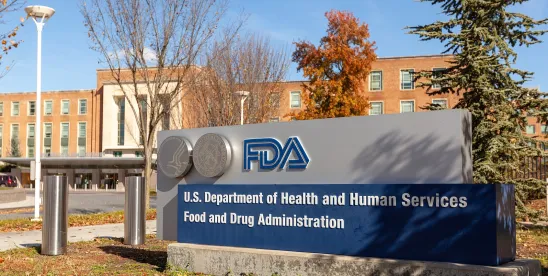Many life sciences stakeholders are familiar with “traditional” designation programs operated by the Food and Drug Administration (FDA) in exercising its medical product authorities, such as the orphan drug designation and breakthrough therapy/breakthrough device designation programs. These designation programs follow a typical paradigm – (1) a product developer demonstrates to FDA that its candidate meets certain qualifying criteria; (2) FDA grants the relevant designation to the product candidate in question; and (3) the product developer then benefits from an increased frequency of interactions with the agency during continued development of the product and/or a valuable advantage that’s secured upon the product’s future marketing authorization (e.g., orphan exclusivity or a priority review voucher).
Congress has now directed FDA to establish several new programs, in part due to the perceived success of such existing designation programs. Although these new programs do not adhere to the more traditional “candidate-specific paradigm,” they still provide the promise of more frequent and timely advice from FDA regarding the program-specific subject matter designated by the agency.
Advanced Manufacturing Technologies Designation Program
As briefly mentioned in our previous blog post summarizing the most significant provisions of the Food and Drug Omnibus Reform Act (FDORA) – part of the Consolidated Appropriations Act for 2023 – FDA has in recent years been actively encouraging the adoption of new manufacturing technologies for medical products. In support of those activities, tucked within FDORA was a provision that directed the agency to create an Advanced Manufacturing Technologies (AMT) Designation Program focused on innovative manufacturing methods for active pharmaceutical ingredients, drugs, and biological products that incorporate “a novel technology, or use[] an established technique or technology in a novel way, that will substantially improve the manufacturing process for a drug while maintaining equivalent or providing superior drug quality” (codified at 21 U.S.C. § 356l(b)).
FDA’s draft guidance implementing this new AMT Designation Program was published in December 2023 and subjected to an extended public comment period that ended in mid-March 2024 (all submitted comments are posted to the e-docket and can be reviewed here). In the agency’s notice of the availability of the draft guidance, it explained that the “[AMT] Designation Program encourages early adoption of new technological advances in manufacturing processes by the pharmaceutical industry or other drug/biologic developers to ensure that regulatory assessments and new drug and biologic development are based on state-of-the-art pharmaceutical science.”
The draft guidance document describes the process for submitting an AMT designation request and its content; how FDA will evaluate those requests; and what benefits to expect from holding such an AMT designation. It also discusses the potential benefits that may be derived from incorporating information about a designated AMT into a future marketing application. Because AMT designation requests are completely independent of a particular product candidate, they can be submitted at any time and do not have to be linked to an investigational product file (unlike the process for breakthrough designation requests and most other longstanding programs).
FDA’s draft guidance explains that, with respect to the eligibility requirement to incorporate a “novel” technology or use an established technology in a “novel” way, a technique or technology, or method of using an established technique or technology, will generally be considered “novel” if it has not been used in a previously approved application for a drug or biologic product. In addition to providing this information in a designation request, the submitter also must demonstrate that the AMT in question could substantially improve the manufacturing process for a drug (or class of drugs), which constitutes the AMT’s “particular context of use.” Requests will be reviewed and evaluated under the statutory criteria for designation by multidisciplinary teams of drug or biologic experts from the agency, and written responses are expected to be issued within 180 calendar days of FDA’s receipt of the designation request.
One of the potential benefits highlighted in the draft guidance is that FDA intends to prioritize interactions with drug/biologic applicants that seek to discuss how to incorporate a designated AMT into their product development activities. The agency also encourages applicants, as part of interactions relating to specific investigational products, to evaluate whether a designated AMT is being used to manufacture their products in the same “context of use” as described in the designation request, especially when the applicant and the designated AMT holder are different entities.
Platform Technology Designation Program
Congress also mandated as part of the December 2022 omnibus legislation a new program for FDA to designate so-called “platform technologies” for the purpose of enhancing efficiencies in drug and biological product development, manufacturing, and review (codified at 21 U.S.C. § 356k(h)(1)). Unlike the AMT Designation Program, which requires a “novel” technology, the Platform Technology Designation Program requires the underlying technology or technique to be “well-understood and reproducible.” Given these very different (and potentially mutually exclusive) qualifying criteria, it is unlikely that a technology could be eligible for both AMT and platform technology designations.
FDA’s draft guidance on the Platform Technology Designation Program for Drug Development was published in May 2024. The most important aspect of the guidance may be its explanation that “platform technology” means the term as defined by Congress in the statute, not the more common broader meaning that’s often used by industry. The statute lists as potentially eligible platforms things like “a nucleic acid sequence, molecular structure, mechanism of action, delivery method, vector, or a combination of any such technologies,” while the agency’s guidance provides more specific examples such as lipid nanoparticle composition or manufacturing parameters and monoclonal antibody engineering or purification platforms.
Besides being well-understood and reproducible, a requestor under this program must demonstrate that its platform technology (1) is incorporated in or utilized by a drug or biological product and is essential to the structure or function of such drug or biological product; (2) can be adapted for, incorporated into, or utilized by more than one drug or biological product that share common structural elements; and (3) facilitates the manufacture or development of more than one drug or biological product through a standardized production or manufacturing process. After determining that the technology qualifies under the statute as a “platform technology” based on those three factors, FDA will then consider whether the requestor provided sufficient information to meet the other eligibility criteria laid out by Congress – first, that “preliminary evidence” demonstrates that the platform has the potential to be incorporated into more than one drug without adversely affecting quality, safety, or manufacturing and, second, that the platform has a “reasonable likelihood” of bringing “significant efficiencies” to drug development or manufacturing and to the review process. How an entity can make these necessary showings in a platform technology designation request is further discussed in the FDA’s draft guidance.
Platform technology designation requests should be submitted after an investigational new drug (IND) file has been opened, and the agency expects to issue written determinations on such requests within 90 calendar days of receipt. For this program, potential benefits include being able to: (1) leverage data from a prior product that uses the same designated platform technology as a proposed new product, and (2) submit a single post-approval manufacturing change supplement for multiple drug products that use the same designated technology for any post-approval changes being made.
FDA recently extended the comment period for the Platform Technology Designation Program draft guidance until August 28, 2024 (the e-docket for this guidance can be accessed here), so interested stakeholders still have time to submit their feedback.
It remains to be seen how companies will value these two new designation programs, and how frequently they will take advantage of one or both of them. We will continue to monitor FDA’s implementation of, and any announcements by industry regarding their participation in, these programs.




 />i
/>i
